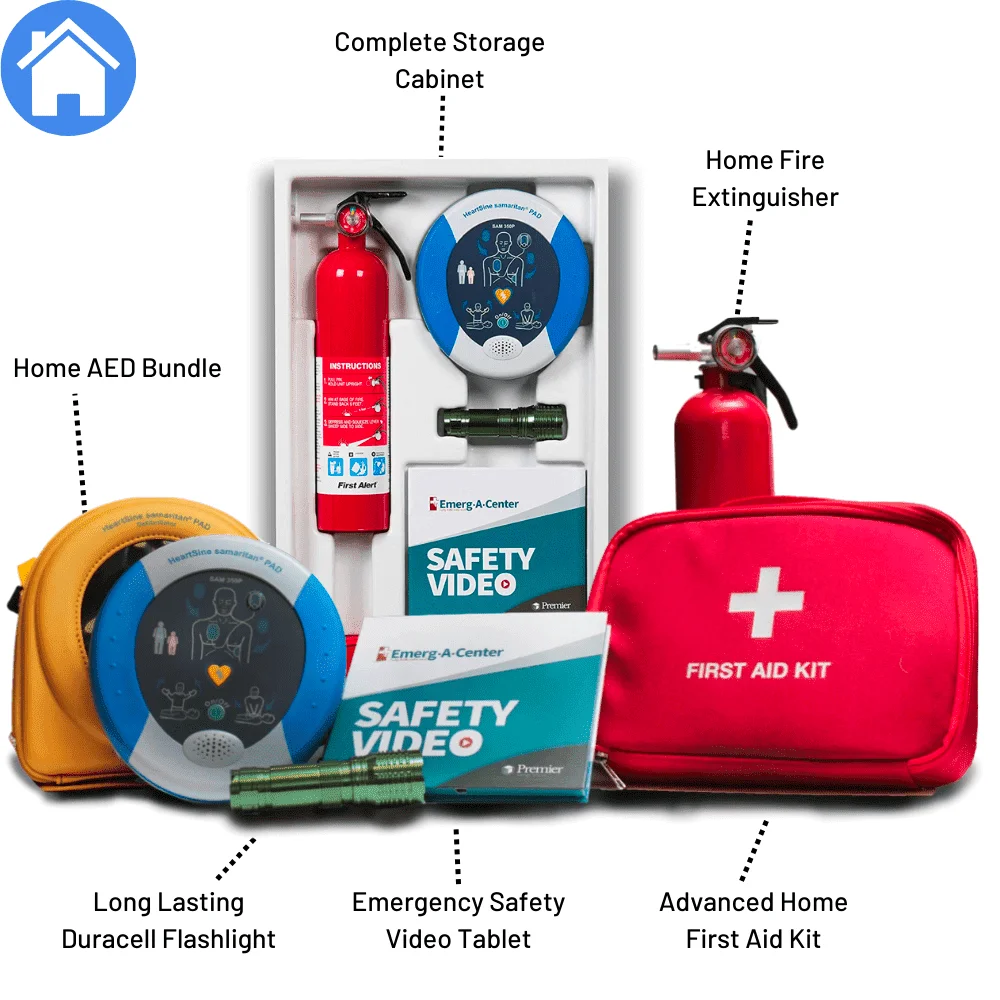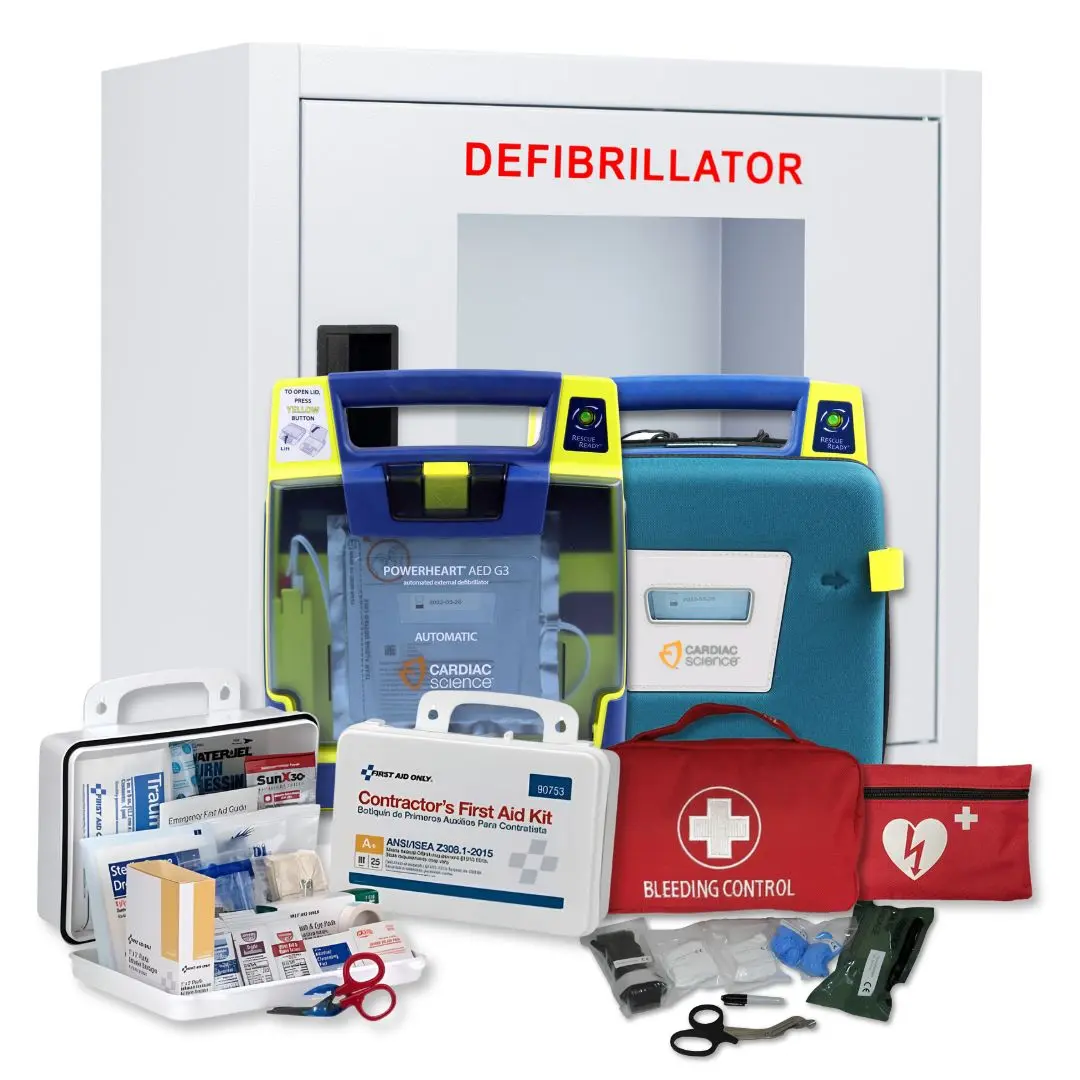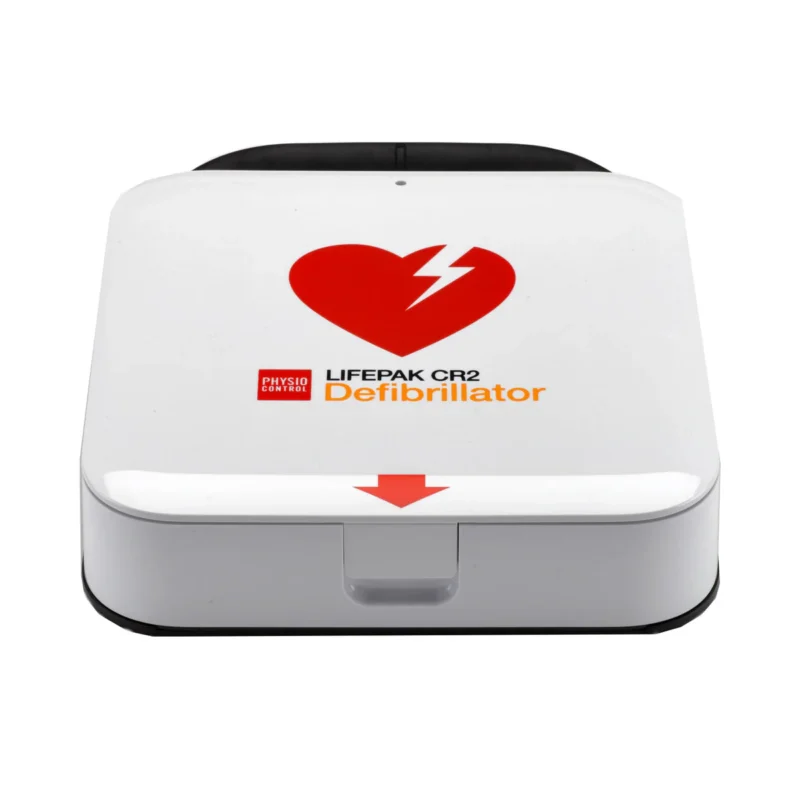No products in the cart.
AED Packages
AEDs and First Responders:Collaboration in Emergency Situation
Every second counts during emergency situations. For someone experiencing sudden cardiac arrest (SCA), time can be of the utmost importance; when intervention efforts can mean life or death. Here, this article highlights how AEDs and First Responders AEDs collaborate during such emergencies to save lives through synergy – this collaboration being key in saving lives through saving them through timely response efforts from Automated External Defibrillators-equipped AEDs working alongside one another as partners can make all the difference when used quickly enough.
AEDs and Their Role

An Automated External Defibrillator (AED) is a portable device used to treat people experiencing sudden cardiac arrest. Sudden cardiac arrest refers to situations when blood flow abruptly stops reaching vital organs due to sudden stopping of heart beat by its muscles; AEDs work by analyzing heart rhythm and administering electric shock therapy called defibrillation to restore normality in heartbeat rhythm; user-friendly devices often feature audio/visual prompts to guide users through its usage process; user/patient safety is assured when using AEDs as they help save lives every time!
AEDs can be found widely throughout public places like airports, schools, sports facilities and office buildings as part of an overall health initiative to increase survival from cardiac arrests.
First Responders
Professional first responders AEDs include professionals such as paramedics, emergency medical technicians (EMTs), firefighters and police officers trained to offer immediate medical aid during emergencies. These individuals possess advanced training and skills for dealing with emergency situations that arise – even cardiac arrest.
As soon as a cardiac arrest occurs, first responders follow a systematic plan that includes evaluating the scene and administering cardiopulmonary resuscitation (CPR), using AEDs when available, and stabilizing patients to ensure advanced medical attention upon arriving at hospital. Their role is essential in stabilizing patients and providing them with advanced medical attention upon arriving there.
Synergy Between AEDs and First Responders

Collaboration between AEDs and first responders can significantly increase survival odds among individuals experiencing sudden cardiac arrest, as shown below:
Rapid Response and Access:
Accessing AEDs quickly is critical to successful outcomes, which is why first responders are trained to quickly locate, access, and deploy these devices when installed at public access locations. In many instances, bystanders or initial responders use public access AEDs until professional help arrives; then first responder AEDs take over to ensure it’s used correctly while continuing care until advanced medical assistance arrives.
Coordinated Efforts:
Emergency responders and AEDs need to work closely together when applied correctly; first responders ensure the device is applied accurately while monitoring how a patient reacts to shock; they provide CPR as necessary and prepare a patient for transport to medical facility if required; with effective communication and coordination between AED prompts and first responder actions increasing chances of successful resuscitation.
Training and Education:
Training programs for first responders often incorporate comprehensive AED instruction. This ensures responders become adept in operating, understanding, and integrating it into emergency response protocols. Furthermore, public awareness campaigns strive to introduce AEDs and promote their use as aid devices during emergencies.
Post-Resuscitation Care:
After using an AED and stabilizing their patient, first responders provide ongoing care by monitoring his or her condition closely – this may include administering additional treatments if necessary such as medications or advanced airway management – while simultaneously planning for an easy transition of care from first responders to hospital staff.
Integration With Emergency Services:
First responder AEDs form part of a larger emergency response system consisting of dispatchers, hospitals and specialty medical teams. When an AED is used in an emergency situation, emergency dispatchers often offer advice over the phone while simultaneously coordinating first responders’ arrival; such an approach ensures comprehensive patient care is given throughout their emergency.
The Impact of Collaboration on Survival Rates
AEDs combined with trained first responders have an incredible effect on survival rates from sudden cardiac arrest, according to studies. Studies have proven that using AEDs, especially combined with early CPR and prompt professional care, significantly increases survival odds while simultaneously decreasing long-term neurological damage risks.
Community centers that prioritize providing AEDs in public spaces and training first responders are likely to experience higher survival rates and better overall outcomes when responding to cardiac arrest situations.
Challenges and Future Directions
First responder AEDs provide numerous advantages. But there remain certain challenges associated with them that must be faced; such as providing widespread access, raising public awareness, providing ongoing training programs for them as well as advancements in both technology and training which can further boost outcomes.
Future initiatives should aim at expanding AED use with emerging technologies, including smartphone apps that guide users through emergency procedures or automated systems that inform nearby responders of an incident. Ongoing research and innovation remain pivotal elements in improving both efficacy of AEDs as well as first responder interventions.
Conclusion AEDs and First Responders
Difference between AEDs and first responders is central to effective emergency medical care, strengthening emergency response systems through joint action. When working closely together in emergency situations, both components enhance each other’s abilities to provide lifesaving medical attention quickly and safely.






